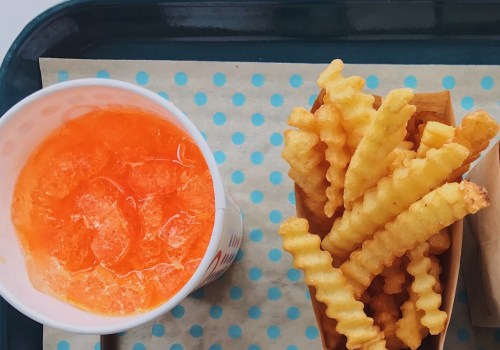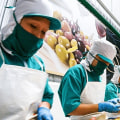When it comes to food and beverage service, there are four main types of service systems: single-point, special, conventional, and economate. Each system has its own advantages and disadvantages, and it's important to understand the differences between them in order to make the best decision for your business. Single-point service is a type of service where guests order, pay for their order, and take care of everything in one place. This type of service is often found in places that don't have a dining room or seating.
Examples include fast food restaurants, drive-thrus, and takeout counters. Special service is a type of service that provides food and beverages in places that are not intended for food and beverage service. This could include hospitals, airplanes, or railways. In this type of service, partially cooked food from the kitchen is brought to the Gueridon Trolly to be fully cooked.
Conventional food systems are the most common type of food system and generally include food production and the retention of hot and refrigerated food before food service. This type of system allows for greater flexibility in the menu and higher perceived quality of the food; however, it also has higher food and labor costs associated with it. Economate food systems, also known as centralized feeding systems, are produced when central kitchens produce a large quantity of food that is transported for service to other, smaller kitchens. This type of system is more effective on a large scale since food can be purchased in bulk for less money; however, temperature and packaging must be controlled to protect food safety.
Economate systems allow for less labor and better consistency of the food served; however, it can lead to work monotony and higher transportation costs. Prepared food systems, also known as “cooking and cooling” systems, are food systems that prepare food and cool or freeze it before reheating it when it's time to serve it. This type of system allows for convenient scheduling of food preparation and batch cooking; however, it can limit the availability of the menu since fresh produce would not be ideal for this type of preparation and preservation. Food safety could also be a cause for concern with these large batches of food being prepared at the same time. Assembled service food systems refer to a type of food production that begins with partially prepared or fully prepared foods which can then be slightly modified or divided into portions before being served.
An example of this could be buying a pre-packaged salad kit that should only be mixed before serving. This type of system has lower labor and material costs since no skilled labor or materials are needed; however, it also has higher food costs and less variability in the menu. On-screen cooking systems are a type of system that allows customers to see the actual preparation and cooking of their food which can improve customer interest and sales. On-screen cooking can be a permanent setting or a temporary option such as a hot plate on a table. Usually chefs show their prepared ingredients and demonstrate their cooking technique. Many commercial establishments may have combined different types of production systems in order to meet all their customers' needs.
Food service operations involve the purchase of raw materials, inventory control, food preparation, and analysis of the business as a whole. Food service managers are responsible for the daily operation of restaurants and other establishments that prepare and serve food and beverages. There are many different types of careers available in this field including kitchen workers, waiters, administrative staff, and restaurant managers. When it comes to how food should be served to customers there are several different styles to follow including dish service, cart service, dish service, buffet service, family-style service, on-screen cooking systems. It's important to understand all the different types of service systems available so you can make an informed decision about which one is best for your business. Each system has its own advantages and disadvantages so you'll need to weigh them carefully before making your choice.









